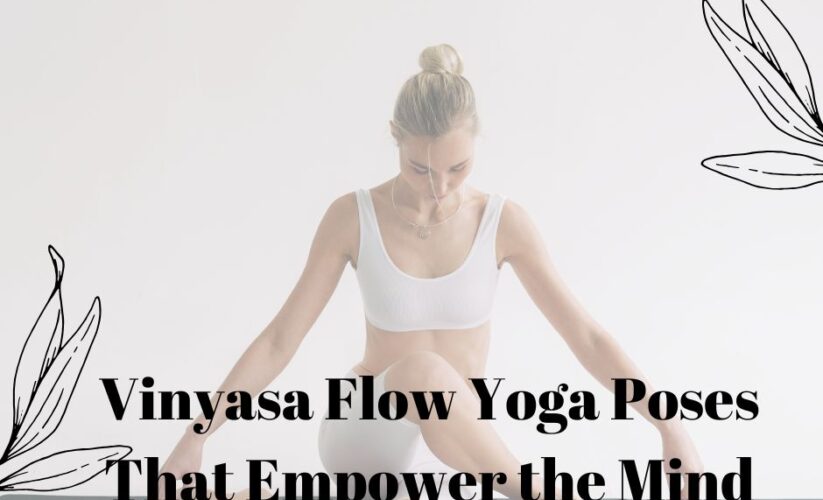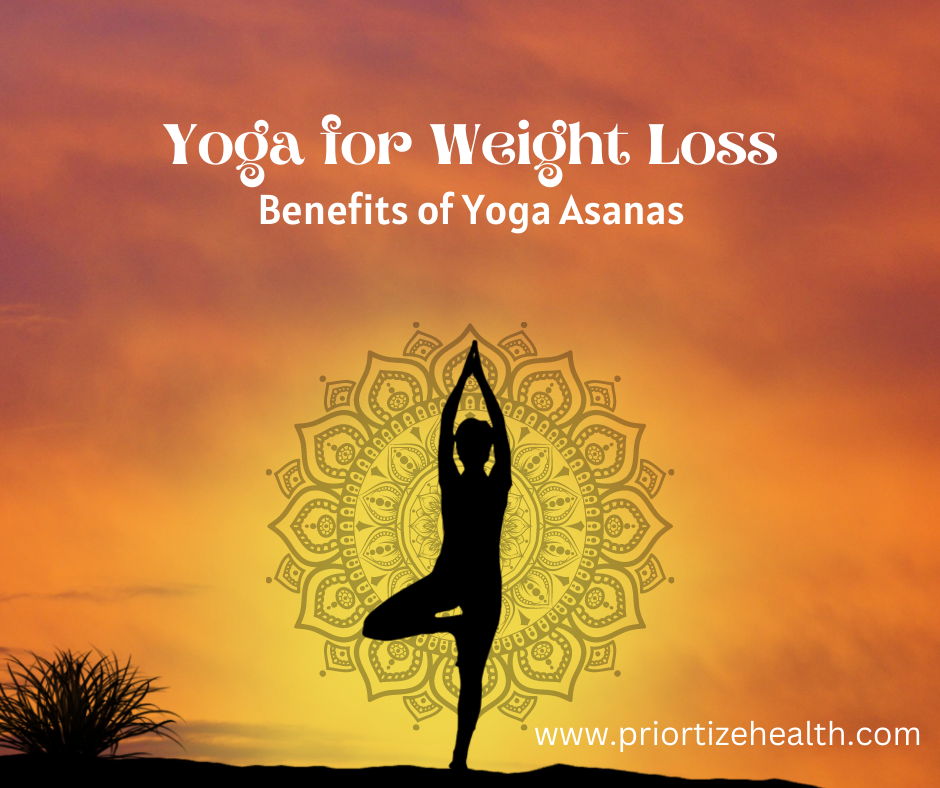
Vinyasa Flow Yoga Poses That Empower the Mind
Vinyasa Flow Yoga, often referred to as Vinyasa. It is one of the most popular styles of yoga practiced today. Vinyasa flow yoga poses helps to empower our mind. It also helps fluid and dynamic sequence of movements. Vinyasa is often described as a “flow” between poses. The seamless transition from one posture to the other is possible with deep, mindful breathing. This makes it a physical workout, and a mental and emotional practice as well. Are you looking to enhance your physical strength, flexibility, mental clarity, and well-being? Vinyasa Flow Yoga might be the perfect addition to your wellness routine. Here are the
Top 10 benefits of Vinyasa Flow Yoga.
1. Improved Flexibility
Vinyasa Yoga has the ability to increase flexibility. The continuous flow between poses stretches the muscles. It also improves the range of motion in the joints. Over time, with regular practice, you will notice a significant improvement in your flexibility. The particular areas are like the hamstrings, hips, shoulders, and spine.
As you move through the postures in a sequence, your muscles lengthen and become more pliable. This can help to reduce tightness and improve posture. It can prevent injuries caused by muscle stiffness.
Example Poses:
- Downward-Facing Dog (Adho Mukha Svanasana)
- Forward Fold (Uttanasana)
- Cobra Pose (Bhujangasana)
2. Increased Strength and Endurance
Vinyasa Flow Yoga isn’t about flexibility. It also builds strength, particularly in the core, arms, legs, and back. Many of the poses in Vinyasa need you to hold your body in challenging positions. This helps to engage and strengthen muscles you might not work on in other forms of exercise.
The flowing nature of Vinyasa also helps improve your endurance. The sustained movement between poses, combined with controlled breathing, can build stamina over time. This makes it easier to perform everyday physical tasks and handle stress in effective manner.
Example Poses:
- Plank Pose (Phalakasana)
- Chaturanga (Four-Limbed Staff Pose)
- Warrior Poses (Virabhadrasana I, II, III)
3. Stress Relief and Mental Clarity
The rhythmic movements and synchronized breathing of Vinyasa yoga have a calming effect on the nervous system. This makes it an excellent practice for stress relief. When you focus on your breath and movement, it creates a meditative state. This helps clear the mind and reduce anxiety.
The focus required to move through each sequence allows you to remain in the present moment. This is the key to releasing stress. By practicing Vinyasa, you will improve the ability to manage and reduce stress in your daily life.
How It Helps:
- Breathing exercises (Pranayama) used in Vinyasa slow down the heart rate. It activates the parasympathetic nervous system, leading to relaxation.
- The flow of poses acts as a moving meditation. This helps you detach from anxious thoughts and focus on your body.
4. Improved Posture
Poor posture can lead to a variety of health problems. This includes back pain, headaches, and fatigue. Vinyasa Flow Yoga helps to correct posture by strengthening the muscles. They support your spine and improve your body awareness. Through the practice of mindful movements, you begin to develop a deeper understanding of how your body aligns in different positions. This leads to improved posture both on and off the mat.
The strengthening of core muscles—particularly the back and abdominals—is a key element of Vinyasa. It helps to keep your spine aligned and your body in an optimal position throughout the day.
Example Poses:
- Mountain Pose (Tadasana)
- Bridge Pose (Setu Bandhasana)
- Locust Pose (Salabhasana)
5. Enhanced Breathing and Lung Capacity
In Vinyasa Yoga, breath is the core component that synchronizes with movement. So, it is often referred to as “breathing with movement.” Learn how to control your breath while holding poses and transitioning between them. This will help you to improve both your lung capacity and your ability to manage stress.
As you move through the sequences, you should take deep, controlled breaths. Over time, this practice increases lung capacity. It also promotes better oxygen flow to the brain and muscles. This helps strengthen your diaphragm and respiratory muscles.
How It Helps:
- Pranayama (breathwork) techniques increase oxygen intake and improve respiratory function.
- Deep breathing lowers the levels of cortisol (the stress hormone) in the body.
6. Detoxification and Improved Circulation
The continuous movement in Vinyasa Yoga helps stimulate the circulatory and lymphatic systems. As you flow from one posture to the next, the body releases toxins through sweat. It improves the blood circulation in the body. This promotes detoxification by increasing blood flow to vital organs and muscles. It allows the body to remove waste in a natural manner.
Sweating during your practice helps flush out toxins. Deep breathing ensures oxygen-rich blood reaches to vital areas of your body, supporting your health.
Example Poses:
- Downward Dog to Upward Dog (Adho Mukha Svanasana to Urdhva Mukha Svanasana)
- Twists such as Revolved Chair Pose (Parivrtta Utkatasana)
- Forward Fold and Reverse Warrior
7. Boosted Mental Focus and Concentration
The mind-body connection in Vinyasa Yoga fosters better mental clarity, focus, and concentration. The practice requires you to stay mentally engaged as you flow through different postures. It translates into improved focus both on and off the mat.
Vinyasa Yoga involves connecting your movements to your breath. So, you remain present in the moment and avoid distractions. This enhances your ability to concentrate. With continued practice, many people report feeling clear and sharper throughout the day.
How It Helps:
- Regular practice improves attention span and cognitive function.
- Mindfulness cultivated in each pose helps improve problem-solving skills and mental acuity.
8. Increased Flexibility in the Spine
The spine is one of the most important parts of your body. So, maintaining its flexibility and mobility is essential for our well-being. Vinyasa Yoga, with its various backbends, twists, and stretches, enhances spinal flexibility. It improves posture and reduces the risk of back pain.
The spine stretches and lengthens in different poses. This can help reduce stiffness in the back and promote better spinal health. A flexible spine also allows for more fluid movement in daily activities.
Example Poses:
- Cat-Cow Pose (Marjaryasana-Bitilasana)
- Cobra Pose (Bhujangasana)
- Wheel Pose (Urdhva Dhanurasana)
9. Increased Balance and Stability
In many Vinyasa poses you have to balance on one foot or hold yourself in challenging poses. This builds strength in your legs and core. The improvement in balance and stability helps in yoga practice and in your day-to-day activities.
As you practice, your proprioception (awareness of your body’s position in space) improves. So it helps you to become more coordinated in movements.
Example Poses:
- Tree Pose (Vrksasana)
- Warrior III (Virabhadrasana III)
- Crow Pose (Bakasana)
10. Emotional Well-Being and Mind-Body Connection
Vinyasa Yoga helps to establish a deeper connection between your body and mind. You should do consistent practice. It makes your mind more attuned to how the body feels during various movements. This awareness leads to better emotional regulation.
The mindfulness aspect of Vinyasa encourages emotional balance. It provides tools for dealing with the challenges and stresses of everyday life. Many practitioners find that Vinyasa Yoga helps them to release negative emotions. It fosters a greater sense of peace and emotional stability.
How It Helps:
- Meditation and mindfulness during practice promote emotional well-being. This can help reduce feelings of anxiety, frustration, or sadness.
- The physical practice of yoga increases serotonin levels. This boosts mood and reduces feelings of depression.
Conclusion
Vinyasa Flow Yoga offers a myriad of benefits that can transform your body, mind, and spirit. Are you looking to build strength, increase flexibility, reduce stress, or improve your emotional well-being? Vinyasa provides the tools to achieve these goals. The combination of fluid movements, mindful breathing, and dynamic postures ensures a holistic approach to health. It goes beyond traditional workouts. Commit yourself to a regular Vinyasa Yoga practice. You can experience the long-term benefits that will have positive impact on your life. This will lead to a stronger, calmer, and more focused version of yourself.





